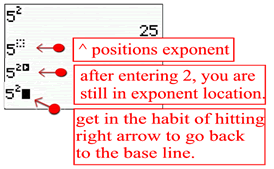

In Smalltalk, the circumflex is the method return statement. Pascal uses the circumflex for declaring and dereferencing pointers. RFC 1345 recommends to transcribe the character as digraph '> when required.

In regular expressions, the circumflex is used to match the beginning of a string or line if it begins a character class, then the inverse of the class is to be matched.ĪNSI C can transcribe the circumflex in the form of the trigraph ?', as the character was originally not available in all character sets and keyboards.Ĭ++ additionally supports tokens like xor (for ^) and xor_eq (for ^=) to avoid the character altogether. It can signify exponentiation, the bitwise XOR operator, string concatenation, and control characters in caret notation, among other uses. The free-standing circumflex symbol ^ has many uses in programming languages, where it is typically called a caret. This circumflex is not to be confused with other chevron-shaped characters, such as the circumflex accent, the turned v or the logical AND, which may occasionally be called carets. This symbol is often called a "caret", but this page will call it a "circumflex" to distinguish it from a true caret. The character became reused in computer languages for many other purposes, and over time its appearance was enlarged and lowered, making it unusable as an accent mark.

The symbol was included in typewriters and computer printers so that circumflex accents could be overprinted on letters (as in ô or ŵ). There is a similar mark, ^, that has a variety of uses in programming, mathematics and other contexts. Hexadecimal numbers are supported only in algebraic expression and in Statistics mode.The caret ( / ˈ k ær ɪ t/) is a V-shaped grapheme, usually inverted and sometimes extended, used in proofreading and typography to indicate that additional material needs to be inserted at this point in the text.Hexadecimal floating point numbers represented with p as exponent.In the above example number 15 is treated as a decimal number as there isn't any 0x prefix.Numbers starting with prefix 0x or having letters A-F are considered Hexadecimal numbers e.g.Unary Prefix Operator -,+,~ are supported e.g., ~-5 = 4.Operator / does floating point division instead of integer division, so results are displayed with decimal.Operator % is considered as a Percent instead of Remainder operator, use for Remainder operator.Operator ^ is considered as an Exponent instead of Bitwise XOR, use ^^ for Bitwise XOR.Operator ! is considered as a factorial instead of bitwise NOT, use ~ for Bitwise NOT.2e2 is neither hexadecimal nor exponent as it misses 0x and there is no other hexadecimal character a-d,f, and to be exponent significand doesn't have decimal point Digits preceding 'e' must have decimal point. Only letter 'e' : 'e' is treated as exponent when significand has decimal point, where digits after e are treated as number raised to power of 10, 2.0e2 = 400 ( 2 * 10^2).Graph Multiple Single Variable Function using.Polynomial Graph for Single Variable Function.Polynomial Function Evaluation Multiple Variables f(x.).Polynomial Function Evaluation Single Variable f(x.).Polynomial Function Evaluation Mode f(x.).Constant Algebraic Expression Mode ±√∿⊻.Trigonometric Functions *sin*,*cos*,*tan*.Operator Precedence PEMDOS / BODMAS ( ) ^ * / +.Functional Operators ! ^ % Bitwise Operators & | ~ ^^.If you want the calculator to display 20 for input 2+3*4 then click Settings and change Precedence to OFF. It can be used by anyone (kids, school student, college student, teachers, professors, work place, seniors) except babies (they can crash it!!).
Where is the caret symbol on a graphing calculator android#
SCal ( Scientific Calculator ) App is a scientific,smart, graphic, programmer, fraction, polynomial calculator available in Android and Apple Platforms.


 0 kommentar(er)
0 kommentar(er)
